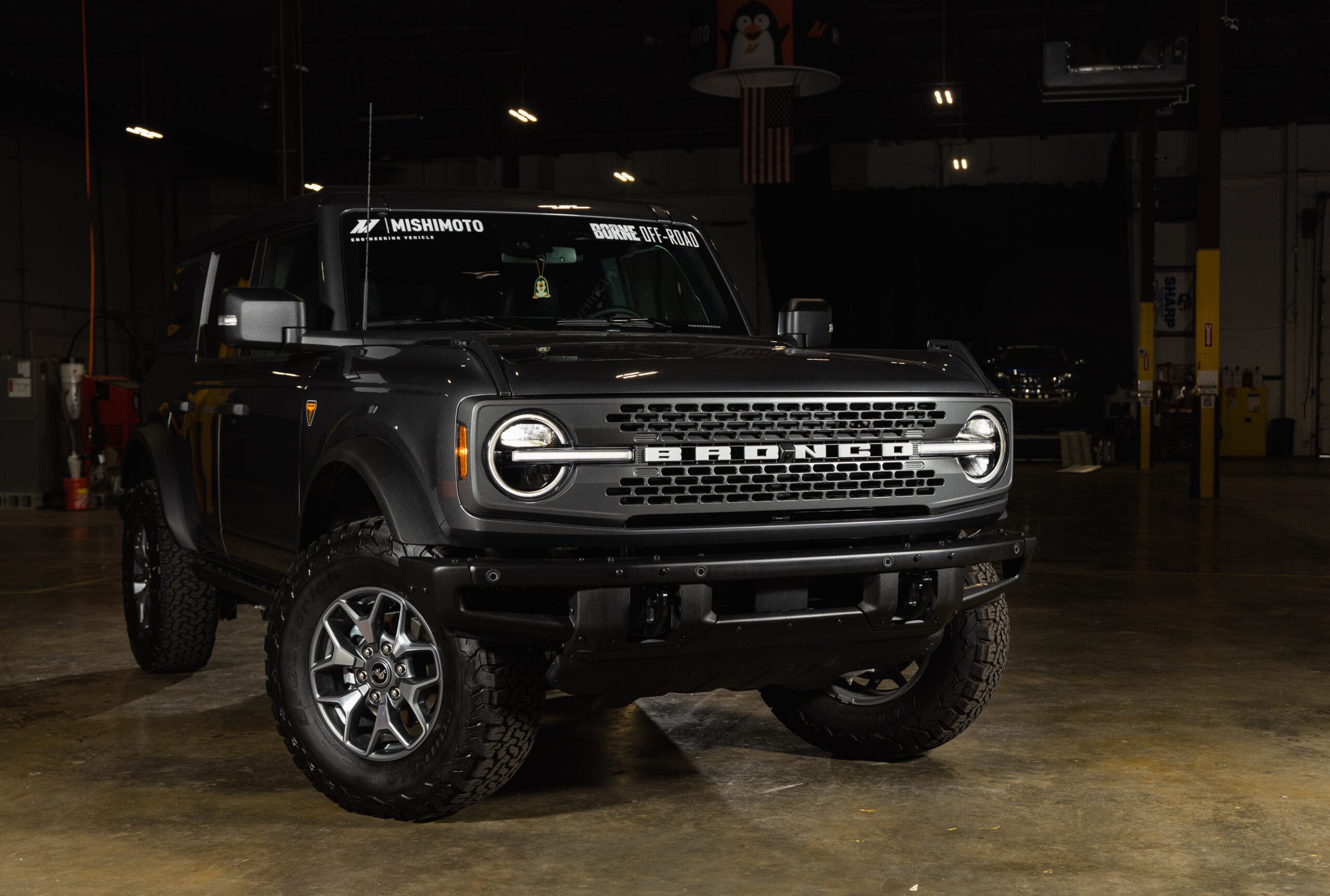
Wild Breath - 2021+ Ford Bronco 2.3/2.7L Performance Air Intake R&D, Part 3 - 2.7L Design Plans
Our Bronco Performance Intake kits are now available! Clickhereto grab yours today!
Ford's flagship off-roader design lives up to its "Built Wild" tagline. Function is prioritized over form. As rugged as these trucks look, those tough looks can only get you so far. Ford knew this and packed their Broncos full of tricks and traits that make them more at home on a desolate trail than crowded interstates. As wild as these Broncos are, some might find the 2.7L under the hood is still a bit domesticated. While not built to be a speed demon, some more attitude is always a welcome addition.
Intakes are always the best place to start when breaking any vehicle out of its shell, with the 2.7L Bronco being no exception. While bolting an intake kit on this 2.7L will provide immediate audible results, we expect most of the performance to come in tandem with performance mapping. We dive deeper into the intricacies of fuel mapping in our recent tech post, but the MAP, or speed density, based tuning powering the Bronco uses a combination of sensors and preloaded fuel tables to determine the proper fuel mixture. So, as the airflow increases in the system, the ECU will compensate and, on the whole, maintain power figures, whereas a performance tune will make the best use of this upgraded intake system.
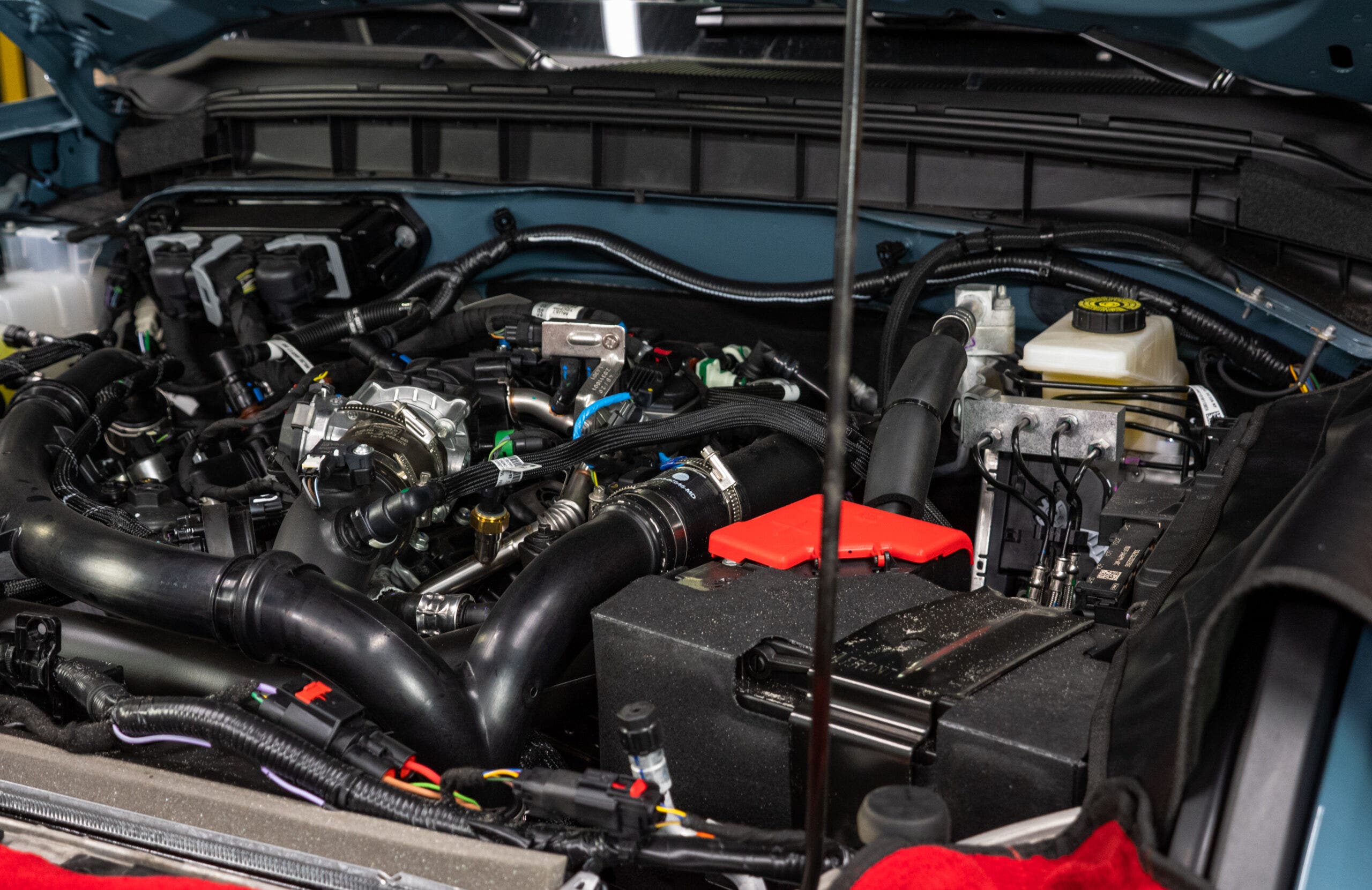
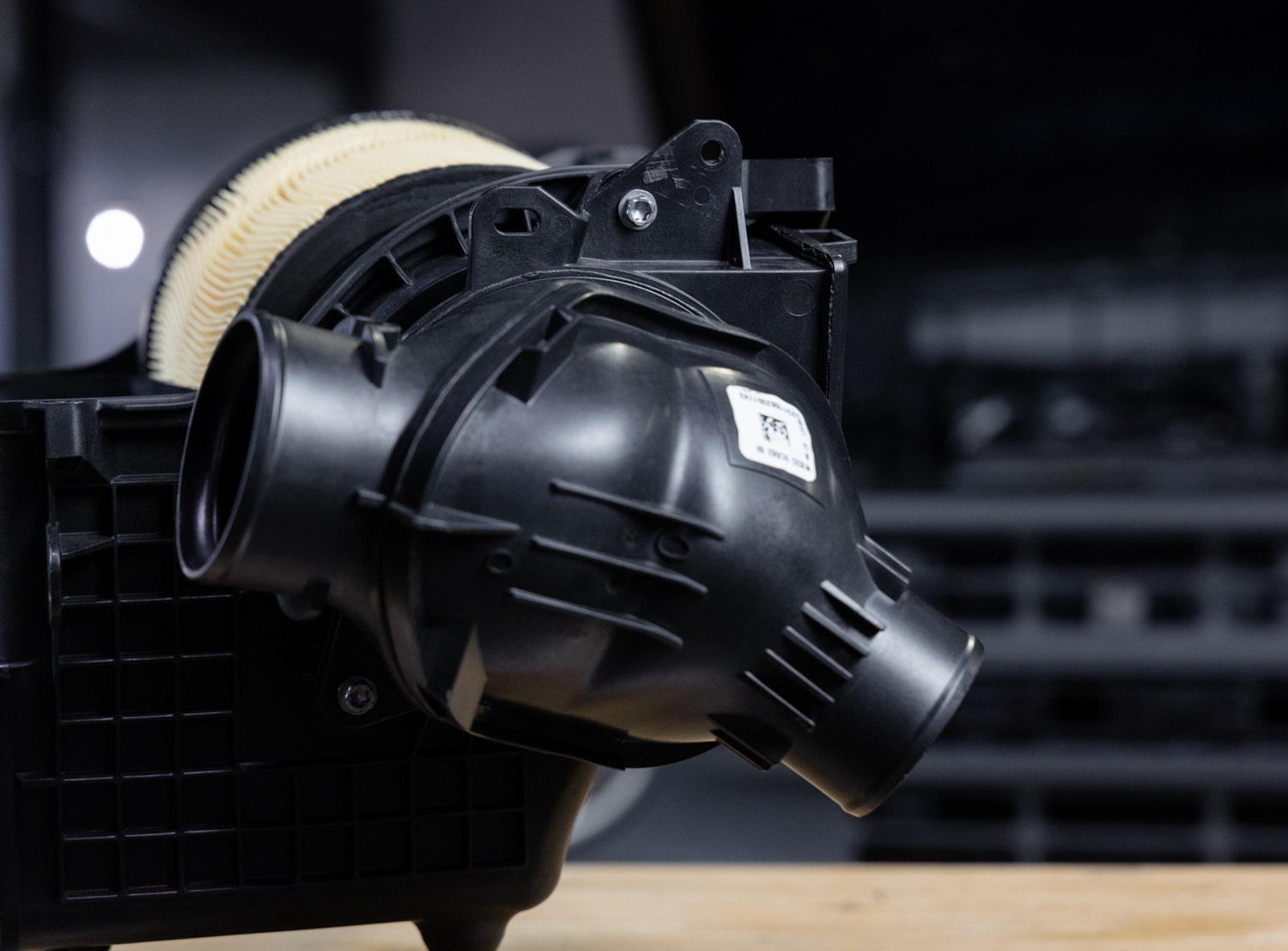
One part of this puzzle is the factory intake piping that merges at the airbox. Since the turbos are at opposite sides of the engine bay, routing the fresh air to either compressor varies.
On the passenger side, it's a quick trip. There's only a short rubber coupler and a small carbon trap box for the air to flow through, but the makeup of these components is not ideal for maximizing your Bronco's performance. The coupler, for instance, utilizes the standard accordion-style design that's perfect for providing some wiggle room between the engine and chassis-mounted airbox to ensure that everything stays securely mounted through your various adventures. While effective in use and cost, the irregular shape of this design impedes and slows airflow through the system.
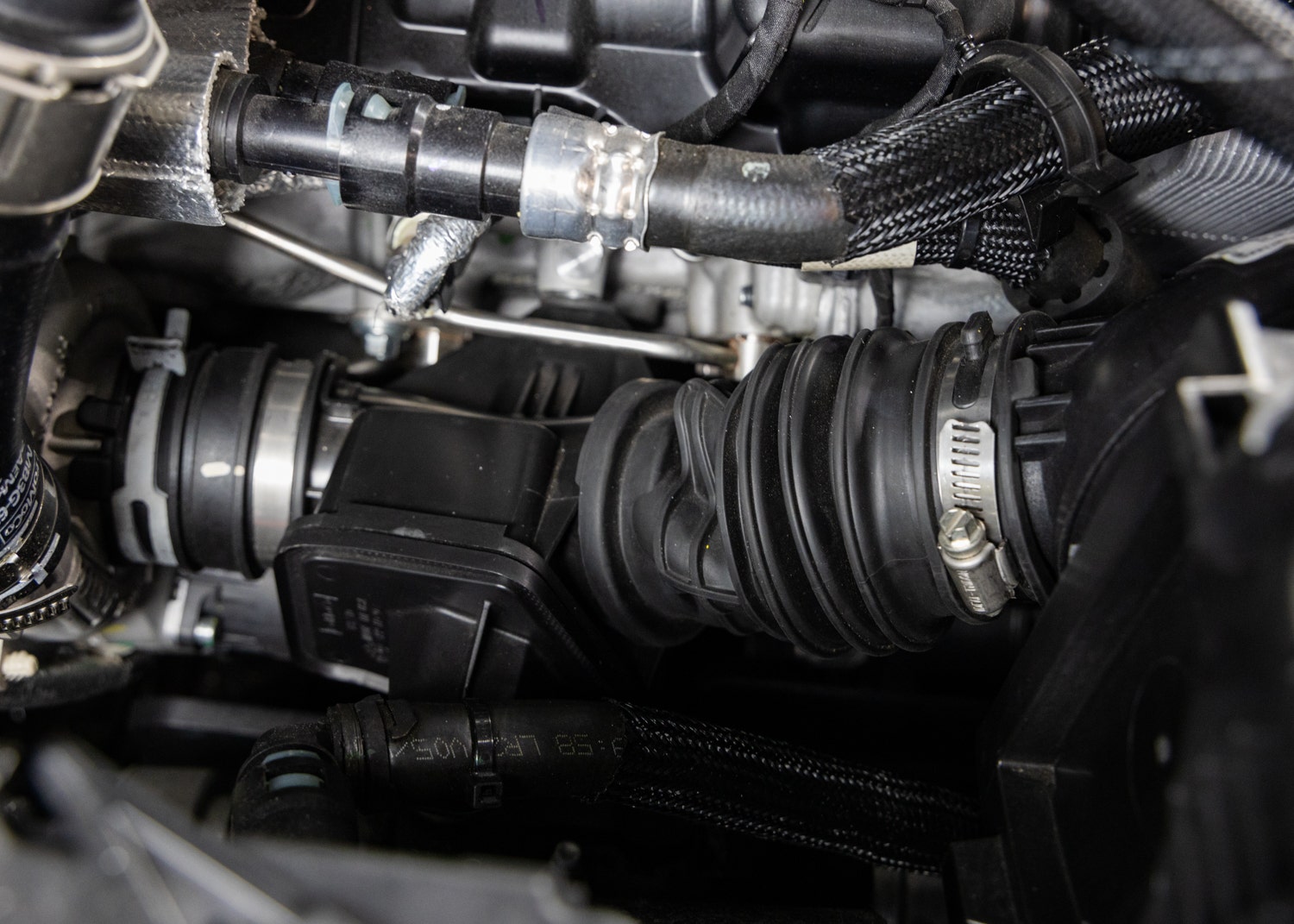
This coupler also is molded with a turbulator design at the base of the hose. The corkscrew shape at the base of this coupler swirls the incoming air for simpler turbo ingestion. Essentially, this turns the wall of rushing air into a smaller and more manageable stream. The tradeoff, however, is that this turbulator still restricts the total size of the intake piping.
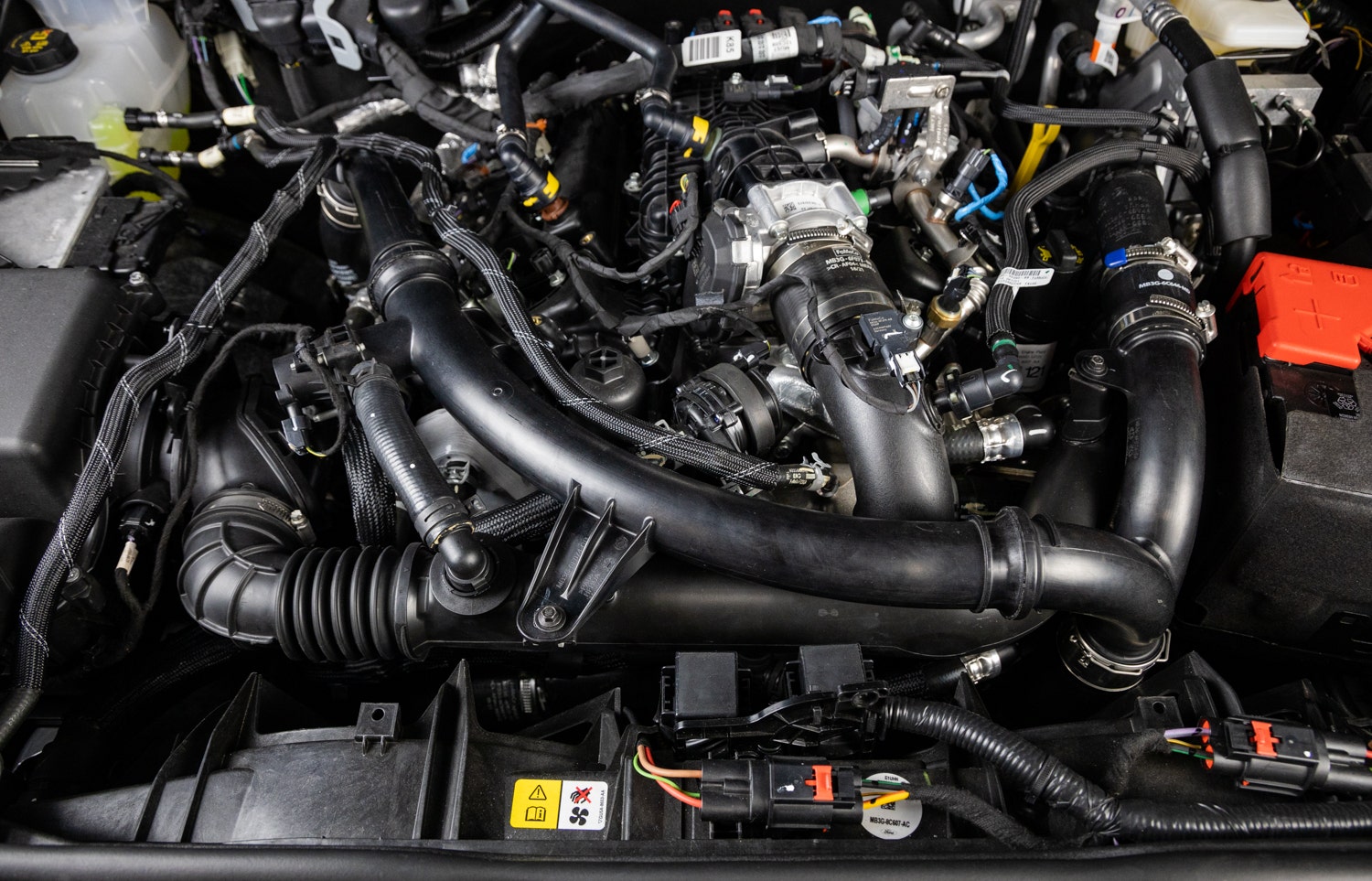
However, the fresh air has more ground to cover, heading to the passenger side turbo. Stemming from the airbox mounted merger, the passenger side piping starts with another rubber flex coupler, leading to a lengthy plastic pipe that snakes through the 2.7L engine bay maze. This pipe links up with a similar emissions-laden system that we found on the 2.3L's intake, which we're opting to keep in this system.
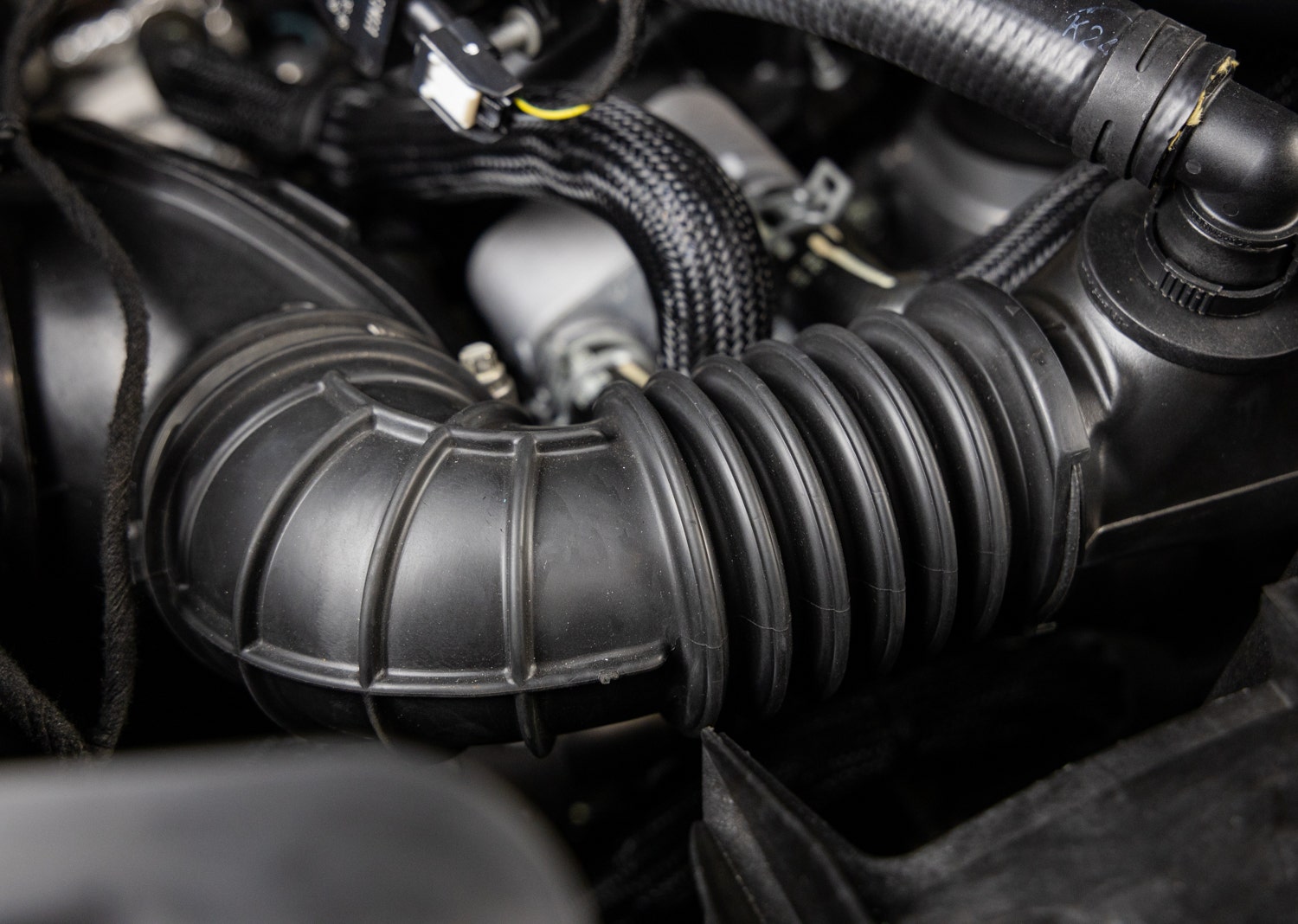
For most, this OEM setup does the job. These Broncos have some grunt from the factory that this stock setup is designed for, but it's full of chokepoints once the boost is turned up. Luckily, our intake wiz, Ye, is already on the case and has plans for the complete 2.7L intake system.
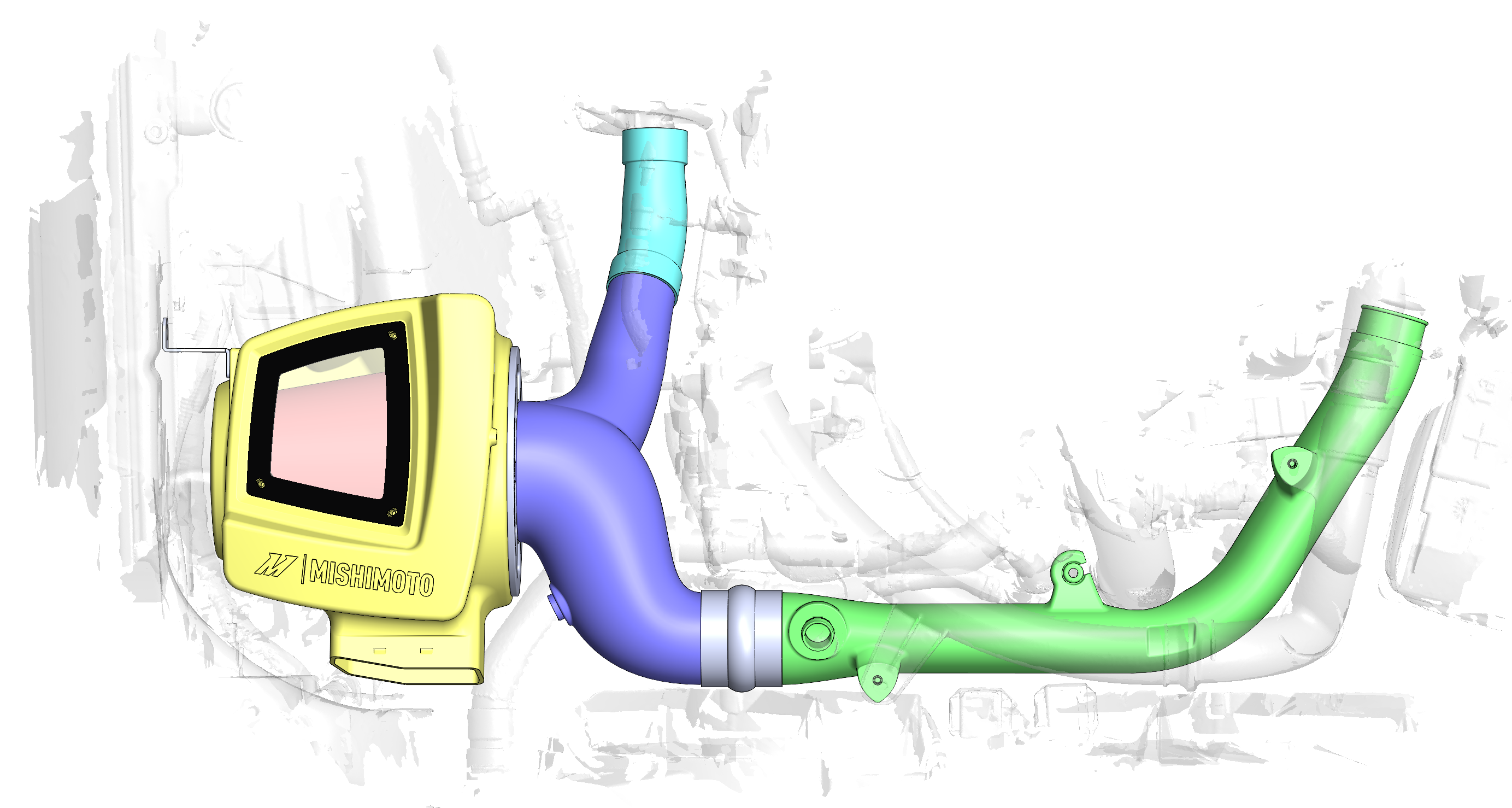
The OEM splitter at the airbox is the root cause of some sharp bends in the pipe routing. Ye plans to completely redesign this intake section with a smoother and further-reaching design. This update will reduce the bend angles and create a more gradual transition between filter outlet size to the turbo inlet size for a smoother flow.
Giving the fresh air a smoother path to follow is one aspect of increasing flow through an intake system. Increasing the overall size of the piping is another method that we're planning for the 2.7L system, especially for the routing to the passenger side turbo. Since we're not limited by calibrated sensor housings due to the speed density tuning, we're not restricted in the size or shape that we can go with for this new pipe. Ye plans to carry over the same rotational-molded polyethylene construction that's found on our new splitter and airbox for solid heat resistance once things heat up. As for the size and shape of our new design, things are still cramped under the hood, so we plan to maximize the available space while retaining the same oval shape, complete with the same mounts and divots for proper fitment in the bay
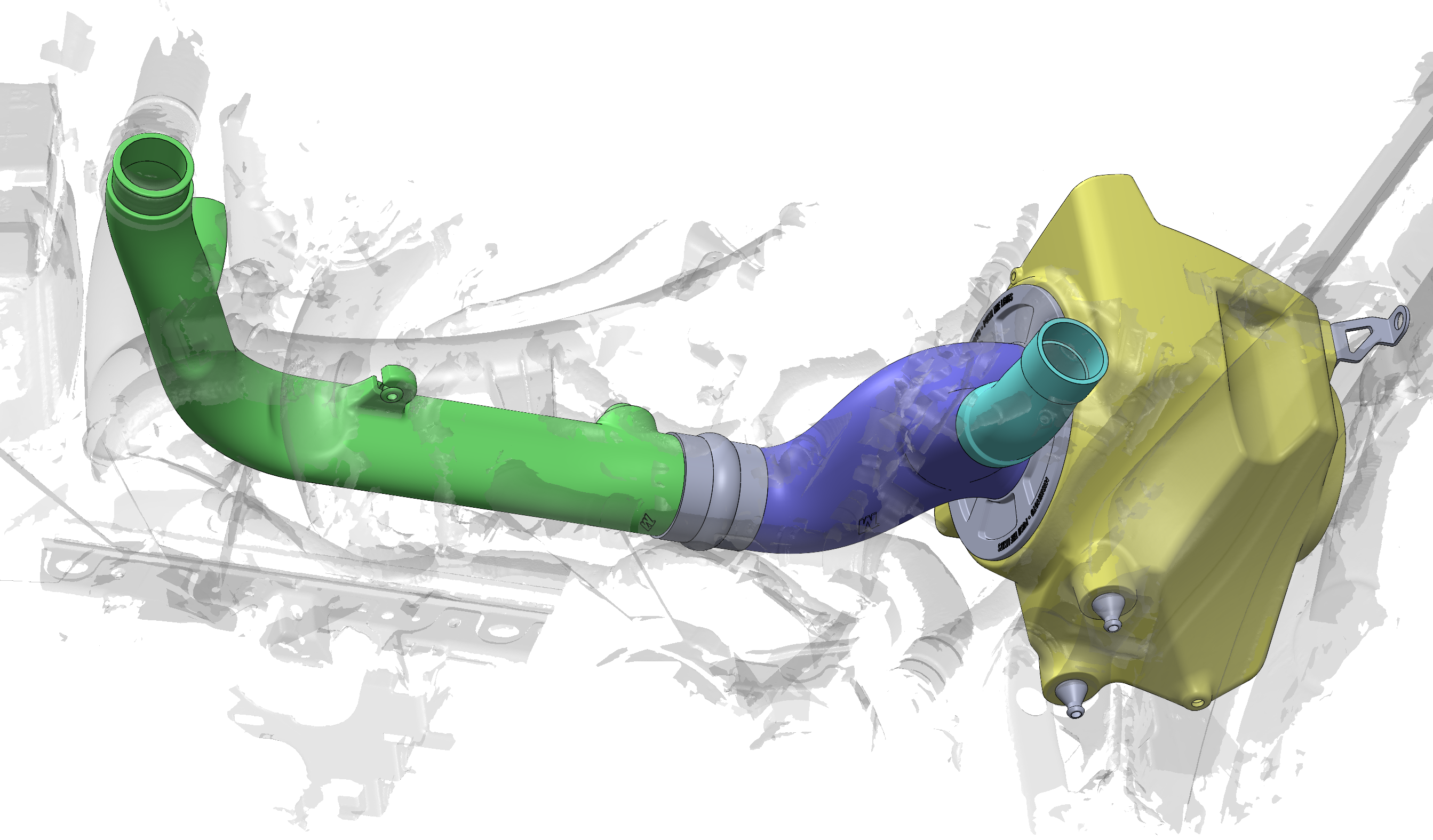
Things are a little cramped in this direction, though, so Ye plans to create a more oval-shaped design, allowing this engine to breathe deeper while still fitting under the Bronco's hood.
From the factory, the Bronco is no slouch. The 330hp and 415tq rated 2.7L EcoBoost is plenty to get you where you need to go, but it's still not enough for some. Whether you're looking for extra grunt for lugging equipment needed for your adventure or just want to shave some time off your daily commute, the intake is a great place to start on your build. Make sure that you stay tuned for the first look at our prototype kit coming soon! In the meantime, we want to know what your power goal is for your 2.7L. Let us know in the comments below!
Thanks for Reading!
-Nick




